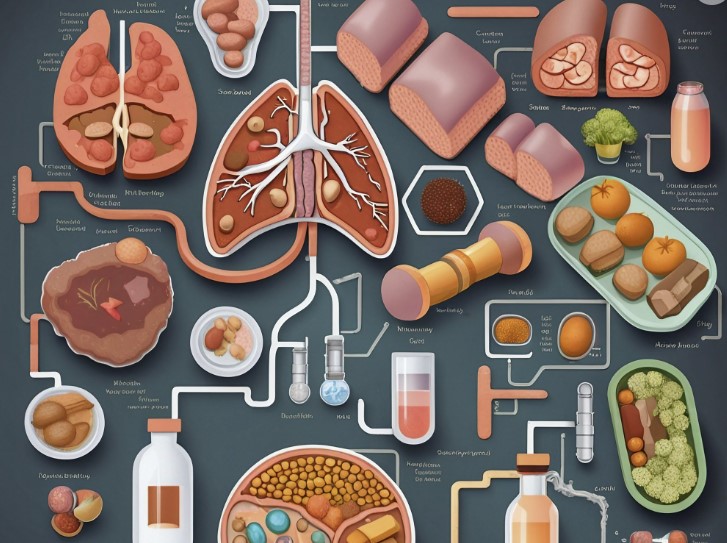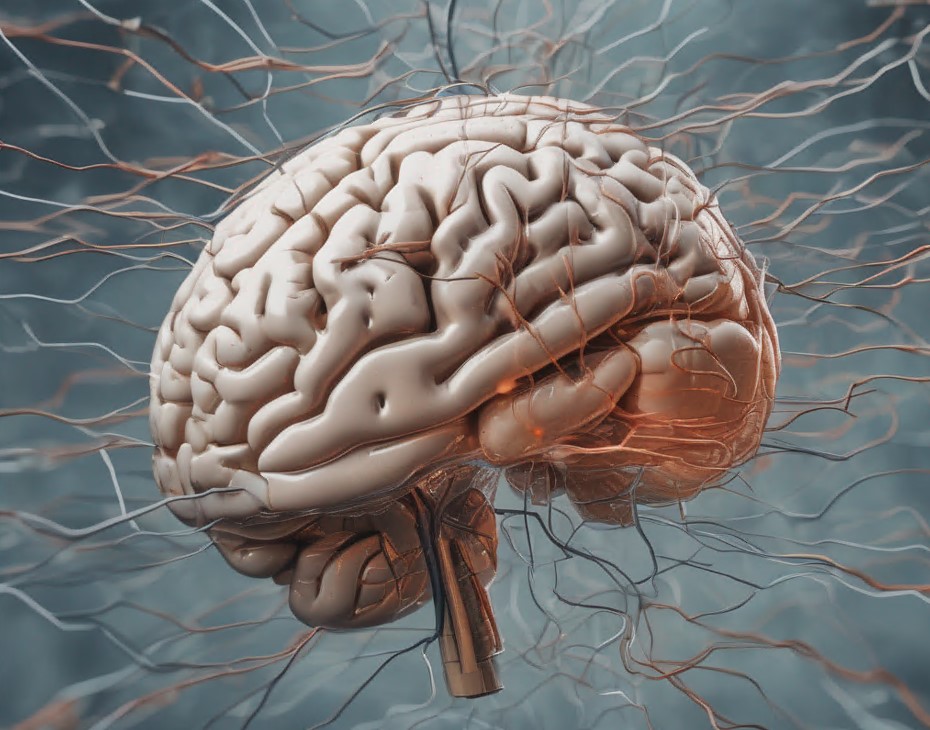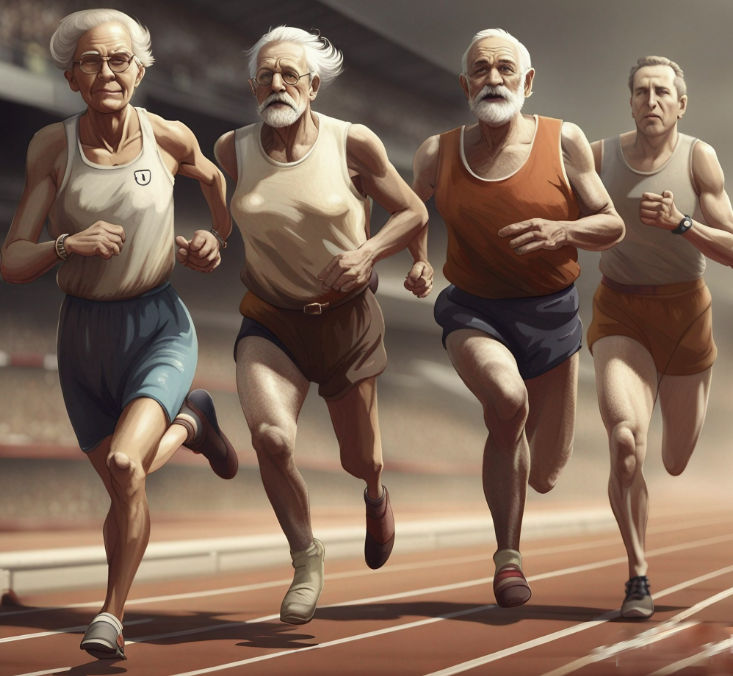Outlive by Peter Attia - Book Summary
Based on Outlive by Peter Attia, 2023
1. Healthspan vs Lifespan and the Four Horsemen
- Dr. Peter Attia stresses quality of life over lifespan.
- He criticizes late intervention in diseases and urges for proactive medical approaches.
- Key longevity factors: understanding nutrition, appreciating protein's role in aging, viewing exercise as a "longevity drug", and considering emotional health's impact.
The Four Horemen
-
Heart disease
According to the American Heart Association, cardiovascular disease (CVD) remains the leading cause of death in the United States, accounting for 928,741 deaths in the year 2020. Approximately 121.5 million U.S. adults have some form of cardiovascular disease.
-
Cancer
According to the American Cancer Society, in the US in 2023, a total of 1.9 million new cancer cases (about 5,370 cases each day) and 609,820 deaths from cancer are expected to occur (about 1,670 deaths a day).
-
Neurodegenerative disease
Neurodegenerative diseases affect millions of people worldwide, and Alzheimer’s disease and Parkinson’s disease are the most common types.
-
Type 2 diabetes and related metabolic dysfunction
According to the Centers for Disease Control and Prevention (CDC), 34.2 million people in the United States have diabetes, and 90-95% of them have type 2 diabetes.

2. Medicine 3.0 - Proactive Prevention
-
Medicine 1.0 (Hippocrates era to ~2000 years after):
- Relied on direct observation and guesswork.
- Recognized diseases as natural occurrences, not divine punishment.
- Had several limitations due to rudimentary understanding and methods.
-
Medicine 2.0 (Mid-19th century onward):
- Based on germ theory of disease.
- Led to improved sanitation, antibiotics, and eradication of diseases like polio and smallpox.
- Transition faced significant resistance (e.g., Ignaz Semmelweis' ostracization for advocating cleanliness).
-
Medicine 3.0 (Upcoming phase):
- Emphasizes disease prevention and personalized care.
- Encourages patients to be proactive about their health.
- Uses advanced technology for improved healthcare (e.g., continuous glucose monitoring).
- Seeks to address systemic issues (ex. healthcare system's focus on treatment over prevention).
- Requires a mindset shift.
💡 Considerations and take-aways
- Proactive Health Management: How proactive are you in managing your health? Do you mainly react to health issues as they arise, or do you take steps to prevent them?
- Knowledge: How much do you know about your health and the diseases you might be at risk for? Do you understand your body and its unique needs?
- Lifestyle Choices: How are your daily habits and lifestyle choices affecting your health in the long run? Are there any changes you can make now to prevent health issues later?
- Healthspan: Are you considering not just your lifespan, but also your healthspan - the period of your life when you're healthy and active? What actions can you take now to ensure a longer, healthier life?
- Patient Participation: How participative are you in your healthcare decisions? Do you take the time to understand and discuss your treatment options with your doctor, or do you passively accept what is prescribed?
- Use of Technology: Are you using technology to monitor and improve your health? For instance, wearable devices for tracking physical activity, sleep, and other health metrics.
- Attitude towards Risk: Are you aware of the health risks associated with your lifestyle choices, and are you taking steps to mitigate them?
3. Centenarians
- Studies show these individuals might possess beneficial genes, rather than healthier lifestyles.
- Genes explain only 20-30% of lifespan variation.
- Strategic actions could potentially mimic centenarian's traits that resist disease and extend life, even without these genes.

Key genes related to longevity:
- APOE: e2 variant for longevity, dementia protection; e4 for Alzheimer's risk.
- CETP and APOC3: linked to cholesterol, heart disease.
- FOXO3: variants linked to longevity; influenced by diet, exercise.
Other findings:
- Longevity involves small interventions, healthy behaviors, not just genes.
💡 Considerations and take-aways
- Genetic Testing: Consider understanding your genetic makeup, especially your variants of the APOE, CETP, APOC3, and FOXO3 genes. This can help inform personalized strategies for longevity.
- Lifestyle Modifications: Diet and exercise play a vital role in activating health-promoting genes like FOXO3. So, adopt a well-balanced diet and regular physical activity to boost gene expression related to longevity.
- Late-onset of Chronic Diseases: Emulate centenarians' ability to delay chronic diseases. This could involve regular health screenings, proactive healthcare measures, and early disease detection and management.
- Cholesterol Management: Given the connection between longevity and genes associated with cholesterol metabolism, pay special attention to managing your cholesterol levels.
- Incremental Changes: Centenarians' longevity suggests that there may not be a singular path to living longer, healthier lives. Instead, make small, incremental changes in your lifestyle and health habits that cumulatively contribute to extending your healthspan.
- Active Mental Health Care: Considering the link between certain genes and cognitive function, incorporate activities into your lifestyle that promote brain health, such as cognitive exercises, stress management, and sufficient sleep.
- Seek Guidance: Collaborate with healthcare professionals to interpret your genetic data, risk factors, and lifestyle to design personalized strategies for improving your healthspan.
4. Caloric Restriction and Rapamycin
Rapamycin Discovery
- Rapamycin, discovered in Easter Island soil in 1964, influences mTOR, a protein complex that regulates cellular longevity.
Caloric Restriction (CR) and AMPK
- Studies suggest that reducing caloric intake by 25-30%, while maintaining essential nutrients, can extend lifespan by 15-45% across species.
- This activates AMPK, an enzyme that promotes glucose production, conserves energy, and stimulates autophagy during low nutrient levels or exercise.

Autophagy
- Autophagy, or "self-devouring", recycles old cell components. Its decline with age is linked to aging-related conditions.
Longevity-Enhancing Drugs
- Rapamycin, used off-label for geroprotective benefits, faces approval barriers due to a medical framework prioritizing disease treatment over prevention.
- Metformin, another potential longevity-enhancing drug, is being tested to delay aging-related diseases in healthy people.
💡 Considerations and take-aways
- Caloric Restriction (CR): The text highlights how caloric restriction can have significant health benefits and lead to increased lifespan. You might reflect on your current dietary habits and consider whether a form of caloric restriction might be beneficial for you. This doesn't necessarily mean a dramatic cut in calories, but rather, mindful eating and potentially avoiding excessive calorie consumption. Consultation with a healthcare professional is essential before implementing significant dietary changes.
- Physical Exercise: The role of AMPK is also highlighted, which is activated not just by nutrient scarcity but also by physical exercise. This might encourage you to maintain or increase your levels of physical activity, as exercise can stimulate beneficial cellular processes.
- Awareness of Research Progress: You might also consider staying informed about the progress of clinical trials related to geroprotection and longevity, such as the use of rapamycin and metformin. These trials could shape the future of aging and disease prevention.
- Personal Health Advocacy: It's also important to note the current medical regulatory framework, which is more focused on treating diseases than preventing them. You might reflect on your own approach to health. Are you more reactive (waiting for health issues to occur before addressing them) or proactive (taking steps to prevent health issues)?
- Mindful Aging: Given the connection between cellular processes like autophagy and aging, you might want to explore other ways to support healthy aging. This could include stress management, quality sleep, and a balanced diet rich in antioxidants, among other things.
💡 Exercises and actions :
- Nutrition Journaling: Keeping a food diary to better understand your dietary habits. This can help identify areas where you might want to decrease caloric intake while maintaining necessary nutrients.
- Regular Exercise: Engage in regular physical activities that you enjoy. This can range from brisk walking, jogging, swimming, to strength training, based on your capability and preference.
- Meditation: Stress can influence the aging process. Incorporating mindfulness exercises or other stress-management techniques can help promote better overall health.
5. Metabolic Dysfunction
NAFLD and NASH
- Nonalcoholic steatohepatitis (NASH) and nonalcoholic fatty liver disease (NAFLD) impact over 25% of people worldwide.
- These liver diseases, reversible through weight loss, can progress to cirrhosis if untreated.
Metabolic Dysfunction
- NASH and NAFLD are part of a larger metabolic disorder epidemic.
- Emphasis should be on metabolic health, not just obesity.

Metabolic Syndrome
- Coined by Gerald Reaven, 'Metabolic Syndrome' is diagnosed through a combination of high blood pressure, high triglycerides, low HDL cholesterol, central adiposity, and elevated fasting glucose, not obesity.
Fructose and Sugar
- High fructose intake can cause NAFLD and other metabolic health issues.
- Early intervention in metabolic health is key.

Disease Links
- Metabolic dysfunction could be linked with diseases like cancer.
💡 Considerations and take-Aways
- Understand that obesity is a symptom of metabolic dysfunction, not the sole cause. Therefore, being non-obese does not guarantee metabolic health.
- Regular monitoring of metabolic health parameters, such as blood pressure, cholesterol levels, waist circumference, and fasting glucose, is crucial, irrespective of your weight.
- A focus on overall lifestyle changes is essential. These include dietary adjustments to improve metabolic health, regular physical activity, stress management, and adequate sleep.
💡 Exercises and actions:
- Regular Exercise: A mix of both aerobic (like brisk walking, running, swimming) and resistance exercises (like weight lifting) can help improve insulin sensitivity and overall metabolic health.
- Healthy Eating: Embrace a balanced diet that's low in processed foods and sugar and high in protein and vegetables.
- Regular Monitoring: Regularly check your metabolic health parameters and consult with a healthcare professional for personalized advice. Consider blood-glucose monitoring.
- Stress Management: Practices such as yoga, meditation, or mindfulness exercises can help manage stress, which plays a significant role in metabolic health.
6. The Heart

The Disease
- ASCVD is a leading global cause of preventable death.
- High US mortality due to late diagnosis and intervention.
- Does not only affect older population.
Cholesterol
- Cholesterol, crucial for life, is neither "bad" nor "good".
- Issues arise when LDL particles get stuck in artery walls.
- Atherosclerotic plaques often go unnoticed until a heart attack or stroke occurs.
Risk Factors
- Lifestyle choices like smoking elevate ASCVD risk.
- ASCVD silently develops in many young adults (16-20 years).
Prevention
- Lowering LDL-C levels to those seen in newborns can help prevent ASCVD.
- Important to monitor blood levels of apoB and Lp(a).
- Prevention includes smoking cessation, blood pressure control, dietary changes, and statins.
💡 Considerations and take-aways
- Assess your current lifestyle choices, particularly smoking and diet, as these contribute significantly to cardiovascular risk.
- Examine your family history for early heart disease. If present, getting a one-time test for Lp(a) levels might be crucial.
- Reflect on your current health status. Do you have any pre-existing conditions like high blood pressure that require immediate attention?
💡 Exercises and actions:
- Introduce regular physical activity into your routine to improve your heart health and manage blood pressure.
- Consult a healthcare professional for a comprehensive cardiovascular risk assessment. Ask specifically about testing for apoB and Lp(a) levels, rather than only cholesterol.
- Consider dietary modifications, such as increasing monounsaturated fats (found in olive oil, avocados, etc.) and reducing the intake of saturated fats.
- If you smoke, work on a plan for cessation.
- If you're prescribed statins or other medications to manage LDL levels, ensure you understand potential side effects and discuss these with your healthcare provider.
- Regularly monitor your health and adjust lifestyle choices accordingly, considering this is a long-term commitment for the prevention of ASCVD.
7. Cancer : Challenges, Risks and Innovations

- Cancer, the second leading cause of death in the US, often resists current treatments despite extensive research and progress in survival rates.
-
A single "cure" for cancer remains elusive. Prevention, early detection, and treatment are pivotal.
- Metastatic cancer:
- Metastatic cancer, which spreads to other organs, causes most cancer deaths.
- Despite its severity, metastatic cancer research is underfunded.
- Anticipated advancements in screening could prove transformative.
- Treatment Challenges:
- Safely killing cancer cells is challenging; chemotherapy, which often harms healthy cells, induces severe side effects.
- The metabolic aspect of cancer implies possible vulnerabilities: some cancer cells may utilize inefficient energy processes for rapid growth.
- Complex interplay between metabolic dysfunction, obesity, diabetes, and cancer.
- Drug Development:
- Drugs targeting key enzymes like PI3K, potentially enabling cancer, are in development but often increase blood glucose and insulin levels.
- Metastatic cancer:
-
Research Highlights:
- A ketogenic diet combined with PI3K inhibitors could potentially enhance cancer treatment.
- Fasting might augment chemotherapy's effectiveness.
- Combining treatments could mitigate the risk of cancer developing resistance.
-
Immunotherapy:
- Immunotherapy strengthens or utilizes the patient's immune system to combat cancer. Examples include CAR-T treatments and 'checkpoint inhibitors'.
- Adoptive cell therapy (ACT), wherein genetically programmed T cells target specific tumors, offers promise.
-
Detection:
- Many cancers are detected late, complicating treatment. Reliable early screening methods exist only for certain cancers.
- Promising techniques like MRI screening and "liquid biopsies" could revolutionize cancer detection.
- Several companies are developing tests for cancer detection in seemingly healthy individuals, bolstering optimism in this field.
💡 Considerations and take-aways
- Lifestyle and Prevention: Reflect on your current lifestyle and potential changes you could make to help prevent chronic diseases like ASCVD and cancer. Consider your diet, physical activity level, smoking habits, alcohol consumption, and stress levels.
- Medical Checks and Screenings: Reflect on the last time you had a comprehensive medical check-up. Have you been screened for diseases for which you may be at risk? Depending on your age, sex, and family history, certain screenings may be recommended.
- Risk Factors: Do you have known risk factors for these diseases, such as a family history of heart disease or certain types of cancer? If so, you might need to be more proactive in prevention and screening.
- Nutrition and Exercise: Are you providing your body with adequate nutrition and exercise? These are key in maintaining overall health and preventing diseases.
- Stop Smoking: If you're a smoker, consider seeking help to quit. Smoking is a major risk factor for heart disease, stroke, and many types of cancer.
8. The Brain

Neurodegenerative Diseases
- Diseases like Alzheimer's, Lewy body dementia, and Parkinson's are major, yet untreatable.
- Alzheimer's links to certain genes (like APOE e4) but they don't ensure it. The "amyloid hypothesis" is questionable.
- Early prevention and ongoing research may help.
Early Detection and Deterrence
- Catching diseases like Alzheimer's early is key due to their stealthy start.
- Over 46M Americans are in stage I preclinical Alzheimer's.
- Detailed cognitive tests can help in early diagnosis.
- Life challenges build "cognitive reserves" and "movement reserves", helping resist cognitive and physical decline.
Preventing Alzheimer's
- Strategies like diet, exercise, and good sleep emphasize metabolic health.
- Grip strength is inversely related to dementia risk.
- Oral health, hearing loss prevention, and regular dry sauna use can also help.
- Promising aids include B vitamins, omega-3, Vitamin D, and hormone therapy.
- Prevention should start early, focusing on vascular and metabolic health, especially for high-risk individuals.
💡 Considerations and take-aways
- Regular Exercise: Incorporate physical activities into your daily routine. Both cardio and strength training are beneficial. Aim for at least 150 minutes of moderate-intensity aerobic activity each week, along with muscle-strengthening exercises two days a week.
- Healthy Eating: Follow a diet that promotes brain health, such as the Mediterranean or ketogenic diets. These diets emphasize fresh fruits and vegetables, whole grains, lean proteins, and healthy fats.
- Cognitive Stimulation: Engage in activities that challenge your brain and help build cognitive reserve. This could be reading, learning a new skill, puzzles, or any activity that requires mental effort and learning.
- Sleep Hygiene: Prioritize sleep and establish a healthy sleep routine. Aim for 7-9 hours of sleep per night. Try to keep a consistent sleep schedule, establish a relaxing pre-sleep routine, and create a sleep-friendly environment.
- Social Engagement: Maintain strong social connections and stay engaged with your community. This could be through volunteering, participating in group activities, or staying in touch with friends and family.
- Oral Health: Maintain good oral health through regular brushing, flossing, and dental check-ups. Gum health can potentially impact cognitive health.
- Regular Hearing Checks: Hearing loss has been associated with cognitive decline, so regular hearing tests and the use of hearing aids (if needed) could be beneficial.
- Regular Check-ups: Have regular health check-ups and monitor your blood pressure, cholesterol, blood sugar, and inflammation markers. Remember, what's good for the heart is good for the brain.
- Stress Management: Incorporate stress-reducing practices like meditation, yoga, or other relaxation techniques into your daily routine.
9. The Importance of Exercise
- Regular exercise significantly augments lifespan, healthspan, and cognitive health.
- Both cardio and strength training exercises are fundamental to longevity.
- Cardiorespiratory fitness, indicated by VO₂max, is a vital indicator of longevity. VO₂max key predictor of longevity
- Poor cardiorespiratory fitness poses a higher risk of death than smoking. (Study link)
- Muscle strength, crucial for survival, is correlated with a longer lifespan. (Study link)
Benefits of Exercise:
- As effective as pharmaceutical drugs in reducing mortality from certain diseases (Study).
- Enhances mechanical efficiency
- Strengthens heart
- Aids in maintaining circulatory system
- Boosts immune system function
- Improves brain health.
- Improves cognitive and emotional health.
Current medical practice does not adequately prioritize exercise.
- Doctors seldom discuss strength training, VO2 max, or test grip strength. (Grip Strength as a mortality indicator)
- Physical therapy is often a reaction to injury or weakness, rather than a preventative measure.
The concept of the Centenarian Decathlon is a proactive approach to aging.
- This framework organizes physical goals for the later stages of life.
- As muscle strength and aerobic capacity decline with age, training should focus on their enhancement and preservation.
- The Decathlon can be customized to cater to individual interests and goals.

💡 Considerations and take-aways
- Exercise is vital for health and longevity: Both cardiovascular and strength training exercises should be incorporated into regular routines for maximum health benefits.
- Early intervention is key: Exercise should be considered as a preventative measure, not just a reactionary step post-injury or weakness. It's also important to maintain muscle mass to avoid future health issues, particularly in old age.
- Value in VO2 max: Regular cardio exercise and working on improving one's VO2 max could potentially lead to a longer, healthier life. This could be a motivating factor in exercise routines.
- Reconsider healthcare practices: There might be a need for the healthcare industry to place more emphasis on the role of exercise, including testing such as grip strength and VO2 max, for overall health and well-being.
- Aging can be active: The concept of the Centenarian Decathlon suggests that we should redefine what aging looks like and advocate for active, personalized lifestyles that extend into later life.
10. How to Exercise

Aerobic Endurance and Efficiency:
- Focuses on Zone 2 training, a mild intensity workout that minimizes lactate accumulation
- Professional athletes are more efficient at using fat as fuel, indicating the importance of aerobic exercise
- Mitochondrial health, crucial for energy production, can be improved through aerobic exercise, particularly Zone 2 training
- Zone 2 training is also important for cognitive benefits and Alzheimer's disease prevention
VO2 Max:
- VO2 max, the maximum amount of oxygen your body can utilize during intense exercise, is correlated with longevity and physical capability
- VO2 max can be improved with sustained, diligent training
- Elite older athletes have significantly higher VO2 max than untrained individuals of the same age
Strength Training:
- Critical in preventing muscle and bone density loss as we age
- The ability to carry heavy objects, a lost skill in modern life, is a measure of strength
- Exercises such as farmer's carries and dead-hanging from a pull-up bar can improve strength and grip strength respectively
- Eccentric strength (strength as muscle lengthens) and hip-hinging are important aspects of safe and effective movement
Stability:
- Aimed at reducing risk of injury and is as important as aerobic fitness and strength
- Lower muscle mass and weaker grip strength in modern adults contribute to instability
- Regular assessment of physical condition and stability is necessary before beginning strength training
💡 Considerations and take-aways
- Balanced Exercise Regimen: For optimal longevity, your workout routine should include aerobic endurance and efficiency training, strength training, and exercises that promote stability.
- Importance of Zone 2 Training: This level of intensity helps your body use fat as fuel more efficiently, promotes healthy mitochondria, and contributes to metabolic health. Include low intensity workouts into your routine for about three hours per week.
- VO2 Max and Aging: Regular training can help slow the natural decline in VO2 max that occurs with age, enhancing your physical capability and possibly even extending your life expectancy. Integrate exercises that help increase your VO2 max into your regimen, such as sustained, intense training sessions once or twice a week.
- Strength Training: Incorporate strength training into your workout regimen, with exercises like farmer's carries, and gradually build up to more complex movements such as weighted hip-hinging.
- Prioritize Stability: Work on improving stability to prevent injuries. Begin with an assessment of your physical condition and stability before embarking on new strength training routines.
- Monitor Progress: Regularly check your progress, like VO2 max levels or strength gains, to ensure you are moving towards your goal of improved longevity.
Sample 6 Week Exercise Program
The following exercise program considers Attia's points on training and attempts to incorporate them into the routines. This is just illustrative.
Weeks 1-2: Foundation Phase
- Monday: 30 minutes of Zone 2 aerobic training (e.g., brisk walking, light jogging)
- Tuesday: Basic strength training (bodyweight squats, push-ups, lunges, planks)
- Wednesday: 30 minutes of Zone 2 aerobic training
- Thursday: Stability exercises (basic yoga poses or Pilates exercises, balance drills)
- Friday: 30 minutes of Zone 2 aerobic training
- Saturday: Basic strength training (bodyweight squats, push-ups, lunges, planks)
- Sunday: Rest
Weeks 3-4: Build-Up Phase
- Monday: 40 minutes of Zone 2 aerobic training
- Tuesday: Strength training with light weights (dumbbell squats, overhead press, bent-over row, deadlift)
- Wednesday: VO2 max workout (20 minutes of interval training: 1 minute high intensity, 2 minutes recovery on stationary bike or treadmill)
- Thursday: Stability exercises (advanced yoga poses, single leg balance exercises)
- Friday: 40 minutes of Zone 2 aerobic training
- Saturday: Strength training with light weights (dumbbell squats, overhead press, bent-over row, deadlift)
- Sunday: Rest
Weeks 5-6: Intensification Phase
- Monday: 45 minutes of Zone 2 aerobic training
- Tuesday: Strength training with increased weights (barbell squats, bench press, bent-over row, deadlift)
- Wednesday: VO2 max workout (25 minutes of interval training: 1 minute high intensity, 1 minute recovery on stationary bike or treadmill)
- Thursday: Advanced stability exercises (advanced yoga poses, Bosu ball exercises)
- Friday: 45 minutes of Zone 2 aerobic training
- Saturday: Strength training with increased weights (barbell squats, bench press, bent-over row, deadlift)
- Sunday: Rest
Please remember to adapt this routine according to your current fitness level and to progressively increase the difficulty as your fitness improves. Always consult with a fitness professional or physical therapist before beginning any new exercise program.
11. Stability

Stability: A Crucial Element
- Stability is essential for injury prevention, efficient force transmission, and continued participation in activities.
- Dynamic Neuromuscular Stabilization (DNS) : a method based on infant movements, retrains the body and brain for proper movement.
Breathing and Stability
- Breathing significantly affects motor control and injury risk, playing a crucial role in stability and movement.
- Different breathing styles correlate with specific stability strategies and physical postures.
Core Activation: Intra-abdominal Pressure
- Intra-abdominal pressure is vital for core activation and stability, needing tailored exercises for optimization.
Feet: The Base of Stability
- Feet play a critical role in stability. Toe yoga can improve their strength and dexterity.
Focusing on Body Parts in Stability Training
- Stability training targets key areas including the feet, spine (with the help of the Cat/Cow sequence), and shoulders.
- Finger strength and grip affect upper body movements. Awareness of finger position and force distribution is essential.
- A hip-hinging movement, the step-up exercise strengthens stability by engaging eccentric and concentric phases.
💡 Considerations and take-aways
- Assess your physical activity levels and routines. Are they comprehensive, including exercises that enhance stability, or are they more focused on strength and endurance?
- Reflect on your posture, movement patterns, and whether you have experienced chronic pain or recurring injuries. These might be indicators of inadequate stability or inefficient movement patterns.
- Consider your breathing patterns. Are you a chest breather, do you have compressed posture, or over-flexibility with limited control? These styles could be affecting your stability and increasing the risk of injuries.
- Pay attention to your feet. How often do you exercise barefoot? Are you aware of your foot positioning and how it might impact your stability?
- Reflect on your lifestyle - do you sit a lot? Is your spine often in a compromised position?
- Practice regular breathing exercises. Not only can these improve stability, but they can also have additional benefits like reducing stress.
- Incorporate exercises that improve foot strength and dexterity, like toe yoga.
- Evaluate your daily routines and work habits. Find ways to correct posture and incorporate movements that promote spinal health.
- If you have persistent pain or movement difficulties, consider seeking professional advice from a physiotherapist or a similar specialist.
💡 Example Exercises
The following are example exercises that consider the points made by Attia :
- Breathing Exercises: Practice slow, deep breaths, focusing on inflating and deflating your abdomen.
- Toe Yoga: Perform toe lifts and toe spreads, while keeping heels grounded.
- Closed-Chain Exercises: Include exercises like push-ups, squats, and leg presses.
- Spinal Awareness Activities: Perform yoga sequences like Cat/Cow for better spinal awareness.
- Scapular CARs: Practice shoulder shrugs and rotations to strengthen your shoulder blades.
- Grip-Strengthening Exercises: Use stress balls, grip strengtheners, or weight lifting for stronger grip.
- Step-up Exercise: Perform step-ups using a box or chair.
Remember to consult a healthcare provider or fitness professional before beginning any new exercise routine.
12. Nutrition 3.0

Nutrition Uncertainty
- Nutrition is complex with conflicting advice due to gaps in our understanding.
- No universal diet fits all; personalized diets based on individual goals and data are more effective.
Personalized Nutrition
- 'Nutrition 3.0' addresses individual nourishment, muscle mass, and metabolic health.
- It promotes exercise and protein intake to enhance metabolic balance.
Nutrition Misconceptions
- Basic nutrition involves balanced calories and essential nutrients.
- Misleading studies often confuse the public's understanding of nutrition.
Challenges in Nutrition Research
- Clinical trials offer insights but struggle with limitations such as participant compliance.
- Individual variations require broader, personalized considerations for dietary advice.
💡 Considerations and take-aways
- Are your dietary choices based on scientific evidence or swayed by popular, possibly misguided, diets?
- Do you subscribe to a 'one-size-fits-all' approach, or are you tailoring your nutrition to your unique needs?
- Have you critically evaluated the health information you receive? Is it backed by credible studies or affected by common misconceptions?
13. Applying Nutritional Biochemistry
Many people consume too many calories and have poor health. The aim should be to decrease calorie intake in a sustainable way.

Ways to Lower Calorie Intake:
- Calorie Restriction (CR): This involves reducing the overall number of calories consumed, without eliminating specific foods.
- Dietary Restriction (DR): This approach involves limiting or avoiding certain types of foods.
- Time Restriction (TR): This involves limiting your eating to specific times or intervals.
Continuous Glucose Monitoring (CGM)
- Continuous Glucose Monitoring (CGM) is useful to observe how your body reacts to different foods. It provides personalized data to help you find the best diet for your metabolism.
Macronutrients
- Protein is essential. Most people need more high-quality protein to maintain muscle mass, especially as they get older. Aim for 0.5-1 gram per pound of body weight per day.
- Fats: Prioritize monounsaturated fats like those in olive oil. Adjust your intake of polyunsaturated and saturated fats based on your individual blood lipid response.
Intermittent fasting
- Intermittent fasting or time-restricted eating can help reduce calorie intake. However, it's crucial to avoid losing muscle mass. Prolonged fasting can be risky for most people.
There's no single "best" diet for everyone. You should find a combination of CR, DR, and TR that suits your metabolism and lifestyle, while focusing on maintaining muscle mass and improving metabolic health.
💡 Considerations and take-aways
- Sustainable Calorie Reduction: Implement a balanced and sustainable reduction in calorie intake through healthier food choices and smaller portion sizes.
- Personalized Approach: Utilize technologies like Continuous Glucose Monitoring (CGM) to understand your body's unique responses to different foods.
- Protein Intake: Aim for 0.5-1 gram of protein per pound of body weight per day to maintain muscle mass as you age.
- Healthy Fats: Prioritize monounsaturated fats and adjust intake of other fats according to your individual blood lipid response.
- Intermittent Fasting: Use this tool wisely to reduce calorie intake, ensuring it does not lead to muscle loss. Extended fasting can be risky.
- Balance of Approaches: Find your unique balance of Calorie Restriction (CR), Dietary Restriction (DR), and Time Restriction (TR) based on your metabolism, lifestyle, and personal preferences.
- Consult Health Professionals: Seek advice from health professionals before making significant dietary or lifestyle changes, especially if you have underlying health conditions.
Focus on enhancing your healthspan through metabolic health and muscle mass maintenance, with a dietary approach tailored to you.
14. The Awakening

Importance of Sleep
- Sleep is critical for health - as important as diet and exercise
- Poor sleep linked to metabolic dysfunction, heart disease, dementia
- Even one night of bad sleep impairs performance
- Chronic sleep deprivation causes "old man blood" - aging biomarkers
Stages of Sleep
- Non-REM (light and deep) - clears short-term memory, waste removal
- REM -emotional processing, creativity, procedural memory
- Sleep cycles between non-REM and REM every ~90 mins
Assessing Sleep Quality
- Sleep trackers can estimate sleep stages and quality
- Questionnaires like PSQI, ESS, ISI to screen for sleep issues
- Consider chronotype - natural early riser vs night owl
- Rule out sleep apnea
Improving Sleep
- Dark, cool bedroom
- No alcohol, limited caffeine
- Wind down electronics/screens before bed
- Destress and relax before bed
- Prioritize sleep opportunity - 8-9 hours nightly
- Treat true insomnia with CBT-I, not sleeping pills
💡 Considerations and take-aways
- Value of Sleep: Understand that sleep is as crucial as diet and exercise for health. Even one night of poor sleep can impact performance and health.
- Stages of Sleep: Sleep is composed of cycles of non-REM and REM stages, each playing different roles in memory, creativity, and emotional processing.
- Sleep Assessment: Use sleep trackers or questionnaires to evaluate sleep quality. Consider your chronotype (early riser or night owl) and check for sleep apnea.
- Sleep Improvement Strategies: Create a dark, cool sleep environment. Limit alcohol and caffeine, and minimize electronics before bed. Allow for 8-9 hours of sleep nightly. Opt for Cognitive Behavioral Therapy for Insomnia (CBT-I) over sleeping pills for persistent insomnia.
Prioritize good quality sleep as a fundamental component of healthspan and longevity.
15. Work in Progress

Recognizing the Problem
- Emotional health as important as physical health for longevity
- Unresolved trauma can cause emotional dysfunction
- Needed intensive therapy to address childhood trauma
Tools and Techniques
- Cognitive behavioral therapy to change thought patterns
- Dialectical behavior therapy (DBT) to build emotional skills
- Mindfulness to create space between thoughts and reactions
- Opposite action to change behaviors and mood
- Reframing situations from others' perspectives
- Tracking thoughts/self-talk to adjust inner dialogue
Ongoing Practice
- Regular therapy for insight and accountability
- Journaling to process emotions
- Committing to "green light" behaviors
- Self-compassion and self-forgiveness
- Believing change is possible
Key Takeaways
- Emotional health is a crucial but overlooked component of longevity
- Past trauma can contribute to emotional dysfunction
- Skills-based therapies like CBT and DBT can treat emotional issues
- Mindfulness, opposite action, reframing help change reactions
- Ongoing therapy and practice is needed to sustain change
- Believing change is possible is the essential first step
Some considerations and implications:
- Emotional health should be integrated into healthcare more
- There is a stigma around seeking mental health treatment
- Not everyone has access to intensive therapy
- Insurance coverage for therapy remains limited
- Therapists require extensive training to deliver effective treatment
- Public education on emotional health is needed
- Research into new therapies should continue
- Compassion for those struggling emotionally is important
💡 Considerations and take-aways
- Recognize the Importance: Understand the significance of emotional health in overall health and longevity. Acknowledge the impact of unresolved trauma.
- Use Therapeutic Techniques: Consider therapies like Cognitive Behavioral Therapy (CBT) and Dialectical Behavior Therapy (DBT) to address emotional issues. Employ mindfulness, opposite action, and reframing to change reactions.
- Practice Regularly: Commit to regular therapy sessions for insight and guidance. Use techniques like journaling, self-compassion, and commitment to "green light" behaviors for continued growth.
- Believe in Change: Keep faith in the possibility of change as an essential step in improving emotional health.
- Advocate for Better Access: Advocate for better integration of emotional health in healthcare, more insurance coverage for therapy, and wider public education about emotional health.
- Support Mental Health Services: Support the training of therapists and ongoing research into new therapies. Show compassion towards those struggling with emotional health issues.
Emotional health is a key factor for longevity and should be treated with the same attention and care as physical health.
